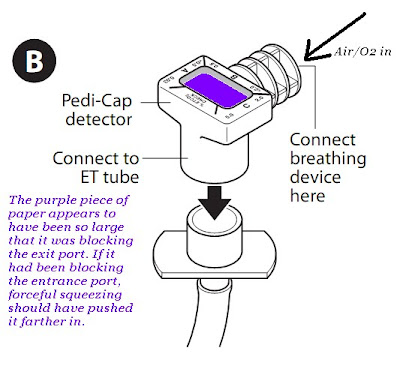Life threatening.
Dramatically lower blood pressure and/or significant difficulty breathing. These may never have happened before in this person. My favorite questions to ask are:
1. Has this ever happened before.
2. If so, what happened then?
3. What seemed to help?
4. What didn’t seem to help?
5. How does this feel compared to previous episodes? Better? Worse?
One of the nice things about anaphylaxis is that you can usually diagnose it from across the room. This is not a subtle presentation.
Their report shows a lot of good information about how schools are handling the ability of children to treat themselves. There is no good reason for a child to have to wait for a teacher to determine that they are sick enough to go to the school nurse to get their EpiPen.[2] What if the school nurse is not available? On 911 calls there is often no school nurse on the premises, since the nurse may be assigned to cover several schools at the same time.
This change in the approach to self-medication by children with chronic, but potentially life threatening, illnesses is a good thing.
I responded to a middle school that did not allow children to carry their medication. A child was having a severe asthma attack. Fortunately, the school nurse was authorized to administer an EpiPen injection. When I arrived, he was looking as if he was ready to stop breathing. Uh oh! The number one get your BVM and intubation kit out indicator. The school nurse had just given him an injection from a pediatric EpiPen (or EpiPen Jr). He was stating that he felt that his breathing was improving. Time to reassess and provide some oxygen and decide between albuterol and benign neglect. If I remember correctly, he received benign neglect, since his breathing was good. He actually was soon complaining more about the side effects, than the respiratory distress. Respiratory distress that almost ended with him intubated, or even in cardiac arrest. The difference can be just a matter of a couple of minutes. And some epinephrine.
Here is a video on using an EpiPen. I looked at a bunch of videos. Most had something good about them, but none were great. This seemed like the best one.
EpiPen now appear to be sold in packs of 2, so that you have another on hand if the anaphylaxis or asthma does not respond to one dose, or if EMS is not readily available.
Here are a couple of other descriptions of the use of EpiPens in life threatening situations. The CNN article states that it is only for anaphylaxis. No. An EpiPen is appropriate for severe asthma, too. Of course, I have pointed out that CNN needs a medical correspondent, who does a responsible job of vetting medical news, or even responding to complaints about completely false information. The LA Times article is by a professor of medicine.[3] The CNN article does not list any medical qualifications.[4] Why include the CNN article? Stories help us to understand what presentations might be like, to anticipate variations in these emergencies.
I have been dispatched to plenty of patients, who had used EpiPens. I have not yet had to treat any of them. Sometimes medical command insists that the patient receive diphenhydramine (Benadryl) and/or fluids, but not because the patient needs it, because it is in the protocol.
There is also a video about FDNY BLS ambulances finally being issued EpiPens.[5] This should not be news. Fire Commissioner Nicholas Scoppetta demonstrates a horrible lack of understanding of math. He states:
At a price tag of more than $96,000, Scoppetta says it will be money well spent.
“This is a terrific investment. If you save the life of one child who goes into shock, it pays for itself 1,000 times over,” said Scoppetta.
One life = $96,000 a thousand times over? Easy math. That is $96 million per save. 2 full time EMTs combined make less in a year than the cost of the whole program $96 thousand.
At a price of $96 million per life saved, even NYC would not be able to afford to keep this program running. Or, this might explain why their resuscitation rate is so low./
Footnotes:
1 2009 State Honor Roll
Annual Report of State Asthma and Allergy Policies for Schools – Updated Report Features New “Honorable Mention” States that Made Progress in 2009
www.StateHonorRoll.com
The Asthma and Allergy Foundation of America (AAFA)
Web Page with links to plenty of resources.
2 EpiPen® and EpiPen® Jr (0.3 and 0.15 mg epinephrine) Auto-Injectors
DEY®
Web page.
3 The highly allergic should keep an epinephrine shot close by
For some, a bee sting can be fatal, so learning to self-administer the injections — and having one on hand when traveling — can be a life saver.
Los Angeles Times
In Practice
By Claire Panosian Dunavan
September 7, 2009
Article
4 Allergy injectors are ‘liberating and daunting’
By Elizabeth Landau
CNN
updated 9:11 a.m. EDT, Fri September 4, 2009
Article
5 All FDNY Life Support Units To Carry Epi Pens
04/04/2009 01:11 PM
By: NY1 News
Article and Video
.


.jpg)






Subscribe to RogueMedic.com